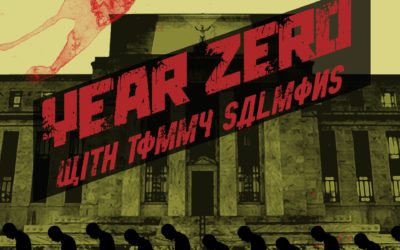Malcom Byrne at Unredacted reviews The National Security Archives released documents on the history of the Iran-U.S. conflict “Documenting Iran-U.S. Relations 1978-2015“.
A look back at the 40 years since the Iranian revolution of 1978-1979 – made possible by a new major documentary publication by the National Security Archive – offers some useful historical context that helps to explain the depths of American-Iranian official antagonism but also may provide some hope for extricating the two sides from what is in many ways just the latest confrontation between the two governments.
The documents reveal a history of animosity between the two countries dating back to 1953 and continuing to the present. Yet the two countries have attempted to thaw relations including a period just after 9-11 when Iran and American negotiators worked cooperatively in Afghanistan – that is until George W. Bush included Iran in the so-called “Axis Of Evil” in January 2002.
As the documents show, the past 40 years have also featured regular attempts beneath the surface by both sides to break through the political permafrost when it has suited them.
The documents provide an excellent historical framework of the relations between the two countries. Of course the main question is what happens next? Byrne outlines possible scenarios based on past history.
Based on a reading of the available record, it is clear that U.S.-Iran relations have been far more complex than they appear on the surface. Despite the trademark “Death to America” chants and similarly acrimonious rhetoric from various American administrations and Congress, each side at one point or another has found it in its interests to seek common ground with the other. Even when tensions have skyrocketed and war has seemed imminent, both governments have managed to pull back, sharing another common feature – a very rational desire not to become embroiled in a bloody direct conflict that could easily dwarf anything either side has experienced for many years.
On a less optimistic note, the record also shows that despite these intentions on the part of the leaders of both countries, a variety of factors continue to pose potentially serious hazards for the region. Among these are a substantial degree of ignorance about the other side (its history, culture, politics, and decision-making) and a dearth of avenues for direct contact. Both are a result of the absence of formal diplomatic ties, which the U.S. has found a way to justify with virtually all of even its most reviled adversaries in the past, but not with the Islamic Republic. Another factor is the impact of domestic politics and the sharpening of political divides, particularly in the United States. Time and again, hardliners in both countries’ security apparatus and parliaments, for example, have torpedoed efforts to work toward a lessening of tensions.
A third, somewhat related, dynamic that has come into play is the preoccupation with showing strength over weakness. The historical record includes several examples of this from Carter forward to Trump. One of the most notable was the submission of a “road map” for better relations by Iran in the wake of the U.S. invasion of Iraq in 2003, which the American side dismissed at least in part because it was seen as proof that Iran was now in a weakened position and did not present an obstacle to American plans. Other issues came into play including U.S. uncertainty over the authenticity of the document, sent via the Swiss ambassador (who remains the principal go-between with Iran in the current crisis), but the instance is one of several that raise fascinating questions about what might have been, especially in the light of how Iran’s position has strengthened by orders of magnitude since that time.
Finally, events on the ground make up a very concrete, additional source of continuing mutual antagonism, which may yet contribute, along with the other circumstances above, to an open explosion in the region. Mistrust based on all these factors has been a persistent feature in both governments for many years, but so have a certain underlying rationality and sense of self-interest, despite perceptions on both sides. The unpredictable interplay of these conflicting elements is a core reason why most Iran experts find it so difficult to foretell the future of the U.S.-Iran relationship.





